Comments / Questions (160)
![]() Annie Jones wrote:
Annie Jones wrote:
Once finished the cast off shaping of the sleeve, does one place the remaining 16 stitches on a thread or cast off?
17.05.2025 - 23:20DROPS Design answered:
Dear Annie, you cast off the remaining stitches after reaching the correct measurements. Happy knitting!
18.05.2025 - 14:21
![]() Nicole Pluquet Caplier wrote:
Nicole Pluquet Caplier wrote:
Je suis bien d'accord avec vous (je tricote depuis plus de 50 ans) ma question est : pourquoi ne pas supprimer ces 26 mailles quand on repasse en côtes mousse avant de rabattre les mailles. merci
12.05.2025 - 12:28DROPS Design answered:
Bonjour Mme Caplier, pardon j'avais mal compris votre question, sans doute le choix de la styliste pour assurer un col plus souple / élastique quand on va faire la couture à l'intérieur. Bon tricot!
12.05.2025 - 13:26
![]() Nicole Caplier wrote:
Nicole Caplier wrote:
Bonjour, je commence le col. j'ai réalisé la taille M Pourquoi ne diminue t-on pas les 26 mailles avant de refermer les côtes mousses? merci.
12.05.2025 - 08:01DROPS Design answered:
Bonjour Mme Caplier, on doit augmenter pour le col juste avant les côtes car il faut plus de mailles pour la même circonférence en côtes qu'au point mousse. Bon tricot!
12.05.2025 - 10:53
![]() Geindreau wrote:
Geindreau wrote:
Bonjour Je voulais savoir comment faire le modèle Siberia en aiguilles normales car je ne tricote pas avec des circulaires Merci pour votre aide
20.04.2025 - 19:42DROPS Design answered:
Bonjour Mme Geindreau, vous devrez diviser le dos/le devant dès le début pour les tricoter chacun séparément puis terminer comme indiqué, car après les emmanchures, on continue en allers et retours. Pour vous aider, et pour les manches, cette leçon vous donnera quelques explications/pistes. Bon tricot!
22.04.2025 - 15:24
![]() Kerstin Andersson wrote:
Kerstin Andersson wrote:
Hur ska rapport A2’s varv 19 och 20 stickas eftersom rapport A1 o A3 inte har varv 19 o 20? Ska de varven stickas som varv 1 och 2 på , A1 och A3.
10.03.2025 - 12:29DROPS Design answered:
Hej Kerstin, ja diagram A.1 och A.3 upprepas med fläta på vart 6:e varv :)
14.03.2025 - 11:47
![]() Anja wrote:
Anja wrote:
Hei! Jeg får ikke skrevet ut oppskriften på denne genseren. Jeg har prøvd ulike skrivere. Har dere tips til hva jeg kan gjøre for å få skrevet den ut?
25.02.2025 - 11:24DROPS Design answered:
Hej Anja, prøv fra en anden weblæser, klik på billedet af skriveren som er øverst i opskriften og vælg de sider du skal bruge :)
05.03.2025 - 14:41
![]() Debra McEdwards wrote:
Debra McEdwards wrote:
I am casting off for the sleeve. Is it only done by the right side of work? It says “ : 19 stitches 1 time AT THE SAME TIME as 8 of these 19 stitches are knitted together 2 and 2 before they are cast off, 3 stitches 1 time, 2 stitches 1 time. Work 3 rows without decreases. Cast off 1 stitch on the next row = 16 stitches left” am I right the first 19 are knit 2 together across, and cast them off at the same time? Then followed by 3, 2, then after 3 rows cast off 1?
05.02.2025 - 15:39DROPS Design answered:
Dear Mrs McEwards, the stitches for neck will be cast off at the beginning of a row from RS on right sleeve, ie first cast off 19 sts (dec evenly) at the beg of next row from RS, then finish row, turn and work row back, then cast off 3 sts at the beg of row from RS, work to the end of the row, turn and work row back, turn and cast off 2 sts at the beg of next row from RS work to the end of the row, turn and work row back. Work 2 more rows (3 in total after last cast off), then cast off 1 st at the beg of next row from RS, finish row. When working left sleeve, cast off these stitches at the beg of a row from WS to make sleeves symmatrical. Happy knitting!
05.02.2025 - 16:12
![]() Louisa Kleijn wrote:
Louisa Kleijn wrote:
Brei ik het telpatroon van onder naar boven of van boven naar onder?
19.12.2024 - 18:20DROPS Design answered:
Dag Louisa,
De telpatronen worden altijd van onder naar boven gelezen.
08.01.2025 - 13:19
![]() Stephanie Leclercq wrote:
Stephanie Leclercq wrote:
Could I change this to a V neck? Not sure whether this would work with how the sleeve extends into the neck?
18.12.2024 - 18:24DROPS Design answered:
Dear Mrs Leclerq, this might be possible but we don't have similar pattern (v-neck and saddle shoulders) to inspire you, you might have to make you own adjustments. Happy knitting!
20.12.2024 - 08:11
![]() Martine wrote:
Martine wrote:
Siberia, est-ce-que ce modèle peut être réalisé avec la laine Karisma ? Ce modèle s'adresse à quel niveau de réalisation : intermédiaire ou confirmé ? Je n'ai pas encore eu l'occasion de m'exercer aux torsades. Merci de bien vouloir répondre à mes questions.
14.12.2024 - 22:44DROPS Design answered:
Bonjour Martine, vous pouvez tout à fait tricoter ce pull en Karisma car ces 2 laines appartiennent au même groupe de nos laines. Lisez attentivement les explications, n'hésitez pas à vous entrainer sur les diagrammes séparément (sur moins de mailles et une autre laine) et si vous avez des questions, n'hésitez pas à utiliser cette rubrique. Bon tricot!
16.12.2024 - 10:30
Siberia#siberiasweater |
||||||||||||||||||||||
 |
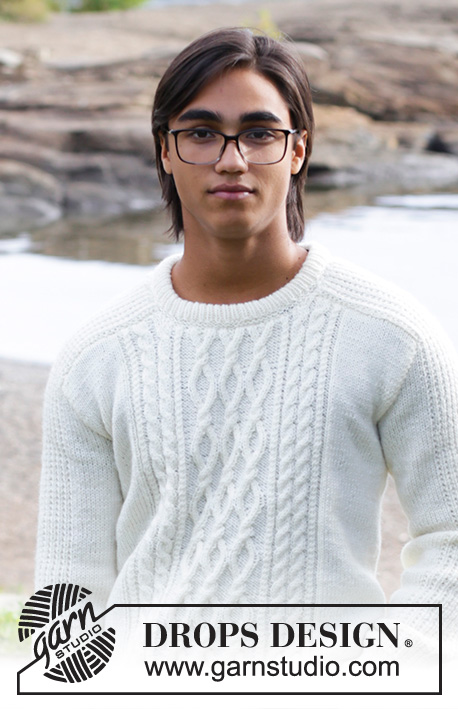 |
|||||||||||||||||||||
Men’s knitted jumper with cables. Sizes 13/14 years – XXXL. The piece is worked in DROPS Merino Extra Fine.
DROPS 185-2 |
||||||||||||||||||||||
|
INFORMATION FOR THE PATTERN: RIDGE/GARTER STITCH (worked in the round): 1 ridge = 2 rounds. Knit 1 round and purl 1 round. PATTERN: See diagrams A.1 to A.4. The diagrams show all the rows in the pattern seen from the right side. INCREASE/DECREASE TIP (evenly spaced): To work out how to increase/decrease evenly, count the total number of stitches on the needle (e.g. 218 stitches) and divide by the number of increases/decreases to be made (e.g. 10) = 21.8. In this example, increase alternately after approx. every 21st and 22nd stitch by making 1 yarn over. On the next round, work the yarn overs twisted to avoid holes. If you are decreasing (in this example) knit together alternately approx. every 20th and 21st stitch and every 21st and 22nd stitch. INCREASE TIP (for sides in body and sleeves): Start 1 stitch before the marker, make 1 yarn over, knit 2 (the marker sits in the middle of these two stitches), make 1 yarn over. On the next round knit the yarn overs twisted to avoid holes. The new stitches are subsequently worked in stocking stitch. CASTING OFF TIP: Decrease 1 stitch at the same time as casting off as follows: Knit 2 stitches together, knit 1 stitch, pass over (cast off) (= 1 extra stitch decreased). ---------------------------------------------------------- JUMPER – SHORT OVERVIEW OF THE PIECE: The sleeve is worked upwards, continued onto the shoulder and along the neck, top back. The neck-stitches at the top of the sleeve are decreased towards the front piece and a small section of the sleeve is continued along the top of the back piece and later sewn together mid-back, so the neck is higher at the back than at the front – see Fig.1. ---------------------------------------------------------- JUMPER: The piece is worked in the round with circular needle as far as the armholes, then the front and back pieces are worked back and forth separately. The sleeves are worked in the round with double pointed needles as far as the armholes, then the sleeves are worked back and forth. To finish, the sleeves are sewn into the armhole and shoulders on front and back pieces. BODY: Cast on 218-230-246-264-280-298-314 stitches with circular needle size 3.5 mm and Merino Extra Fine. Work 2 RIDGES – see description above! Then work rib (knit 1 /purl 1). When the piece measures 5 cm work 1 ridge, AT THE SAME TIME as you increase 10-10-10-12-12-14-14 stitches evenly on the first round – read INCREASE/DECREASE TIP= 228-240-256-276-292-312-328 stitches. Insert 2 markers in the piece, one at the beginning of the round and one after 114-120-128-138-146-156-164 stitches (= in each side). Change to circular needle size 4 mm and work PATTERN as follows – see description above: * Work 20-23-27-27-31-31-35 stitches stocking stitch, A.1 (= 22 stitches), A.2 (= 10 stitches) over the next 30-30-30-40-40-50-50 stitches (= 3-3-3-4-4-5-5 repeats in width), A.3 (= 22 stitches), 20-23-27-27-31-31-35 stitches stocking stitch, the marker sits here *, work from *-* 1 more time. REMEMBER THE KNITTING TENSION! Continue the pattern and repeat the charts in height. When the piece measures 9 cm increase 1 stitch on both sides of the markers in each side – read INCREASE TIP (= 4 stitches increased). Increase in this way every 6-8-8-9-9-9-10 cm a total of 5 times = 248-260-276-296-312-332-348 stitches. When the piece measures 38-47-48-49-50-51-52 cm cast off 6 stitches for the armhole in each side (cast off 3 stitches on both side of the markers in each side) and continue each piece separately. BACK PIECE: = 118-124-132-142-150-160-168 stitches. The piece is worked back and forth with circular needle. Continue with pattern, stocking stitch and 1 edge stitch in garter stitch in each side, AT THE SAME TIME continue to cast off for armhole at the beginning of each row in each side as follows: 2 stitches 3-3-4-4-4-4-5 times and 1 stitch 1-0-1-1-2-2-2 times = 104-112-114-124-130-140-144 stitches. When the piece measures 49-59-61-63-65-67-69 cm cast off, AT THE SAME TIME as you decrease 20-20-20-22-18-24-24 stitches evenly over the stitches in diagrams A.1, A.2 and A.3 – read CASTING OFF TIP. FRONT PIECE: = 118-124-132-142-150-160-168 stitches. Continue with pattern, stocking stitch and 1 edge stitch in garter stitch, AT THE SAME TIME as cast off for armhole as for back piece = 104-112-114-124-130-140-144 stitches. When the piece measures 46-56-58-60-62-64-66 cm decrease 10-10-10-12-12-12-12 stitches evenly over the middle 40-40-40-48-48-48-48 stitches before these stitches are placed on a thread for the neck (= 30-30-30-36-36-36-36 stitches on thread). The shoulders are now finished separately. On the next row from the neck cast off 2 stitches = 30-34-35-36-39-44-46 stitches. When the piece measures 49-59-61-63-65-67-69 cm (adjust to match the back piece) cast off, AT THE SAME TIME as you decrease 5-5-4-5-3-6-6 stitches evenly over the 15-15-15-16-16-21-21 stitches towards the neck – remember CASTING OFF TIP. Work the other shoulder in the same way. RIGHT SLEEVE: The piece is worked in the round with double pointed needles. Cast on 56-58-60-62-64-66-68 stitches with double pointed needles size 3.5 mm and Merino Extra Fine. Work 2 ridges. Then work rib (= knit 1 /purl 1) until the piece measures 10 cm. Work 1 ridge, AT THE SAME TIME as you decrease 5 stitches evenly on row = 51-53-55-57-59-61-63 stitches. Insert 1 marker at the beginning of the round. Change to double pointed needles size 4 mm and work pattern on the next round as follows: Stocking stitch over the first 4-5-6-7-8-9-10 stitches, work A.4 over the next 42 stitches, work the first stitch in A.4, 4-5-6-7-8-9-10 stitches stocking stitch. Continue this pattern upwards. AT THE SAME TIME when the piece measures 13-12-13-12-12-14-13 cm increase 1 stitch on each side of the marker – remember INCREASE TIP! Increase in this way every 2-2½-2-2-2-1½-1½ cm a total of 14-15-16-17-18-19-20 times = 79-83-87-91-95-99-103 stitches. When the piece measures 45-50-50-49-49-48-48 cm cast off 6 stitches mid under the sleeve (cast off 3 stitches on each side of the marker). Then work back and forth on the needle AT THE SAME TIME as you cast off for sleeve cap at the beginning of each row in each side as follows: 2 stitches 2-4-6-7-9-10-12 times and 1 stitch 12-10-8-8-6-6-4 times = 41 stitches left in all sizes. The piece measures 55-60-60-60-60-60-60 cm. NOW YOU MEASURE THE PIECE FROM HERE! Continue with pattern over the remaining stitches until the piece measures 12-14-13-15-17-18-19 cm. Then you cast off at the beginning of each row from the right side as follows: 19 stitches 1 time AT THE SAME TIME as 8 of these 19 stitches are knitted together 2 and 2 before they are cast off, 3 stitches 1 time, 2 stitches 1 time. Work 3 rows without decreases. Cast off 1 stitch on the next row = 16 stitches left in all sizes. Continue working until the piece measures 19-21-22-24-26-27-28 cm. The whole sleeve measures approx. 74-81-82-84-86-87-88 cm. LEFT SLEEVE: Worked as for right sleeve, but decreases at top are worked in opposite side, i.e. at the beginning of every row from the wrong side. ASSEMBLY: Sew the sleeves together mid back inside the cast off edge of each sleeve. Sew the sleeves to front and back piece on body in the outermost stitch as follows: Sew from the armhole and up along shoulder on back piece to mid back. Repeat on the other side. Sew in that same way from armhole and up along shoulder to the neck on the front piece. Repeat on the other side. NECKLINE: Knit up 94-94-108-108-108-108-108 stitches around the neck (including the stitches from the thread) with short circular needle size 3.5 mm and Merino Extra Fine. Work 2 ridges, AT THE SAME TIME as you increase on the last round 22-22-26-26-26-26-26 stitches evenly = 116-116-134-134-134-134-134 stitches. Then work rib (= knit 1 /purl 1). When the rib measures 8 cm work 1 ridge. Cast off. Fold the neck double and fasten on the inside, ridge to ridge. |
||||||||||||||||||||||
Diagram explanations |
||||||||||||||||||||||
|
||||||||||||||||||||||
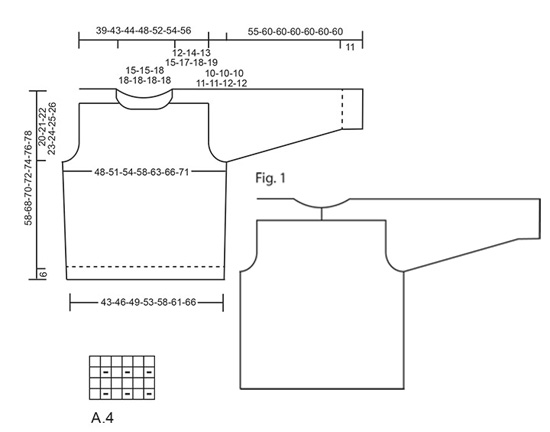
|
||||||||||||||||||||||
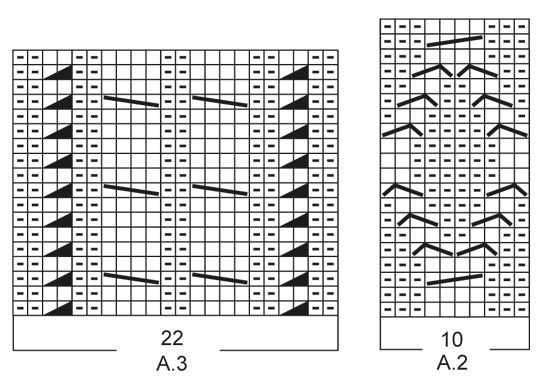
|
||||||||||||||||||||||
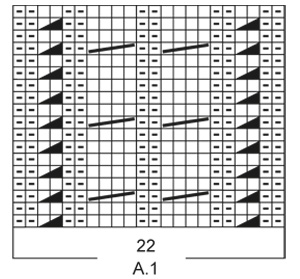
|
||||||||||||||||||||||
Have you finished this pattern?Tag your pictures with #dropspattern #siberiasweater or submit them to the #dropsfan gallery. Do you need help with this pattern?You'll find 29 tutorial videos, a Comments/Questions area and more by visiting the pattern on garnstudio.com. © 1982-2025 DROPS Design A/S. We reserve all rights. This document, including all its sub-sections, has copyrights. Read more about what you can do with our patterns at the bottom of each pattern on our site. |
||||||||||||||||||||||







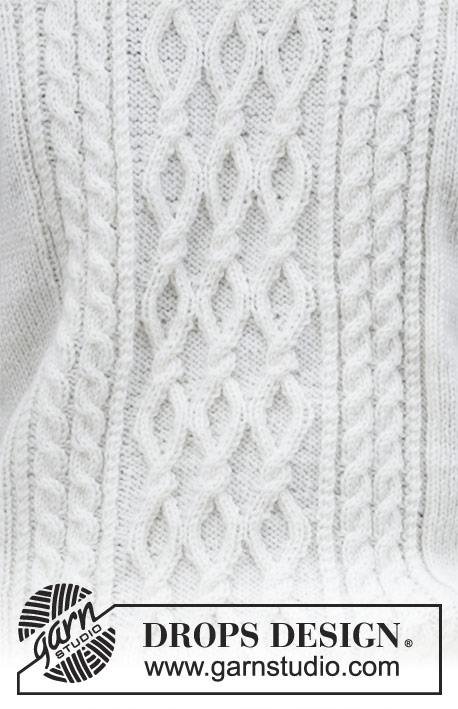

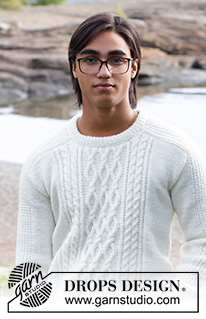




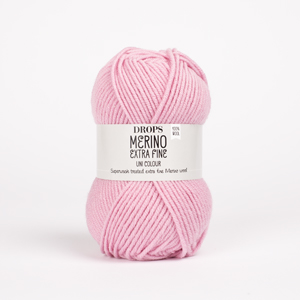
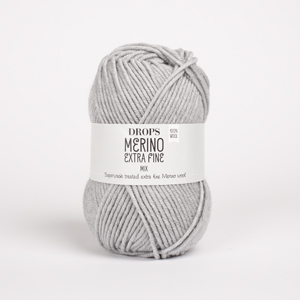






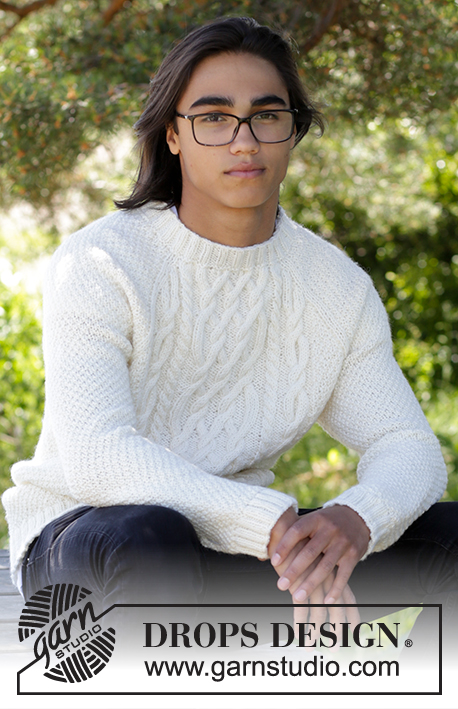



















































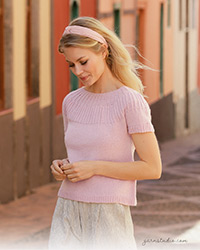
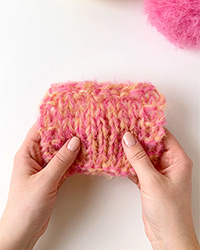
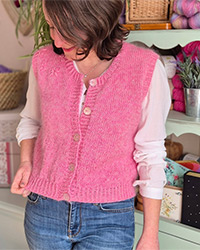
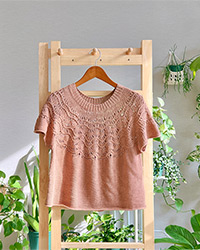
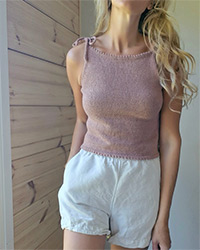

Post a comment to pattern DROPS 185-2
We would love to hear what you have to say about this pattern!
If you want to leave a question, please make sure you select the correct category in the form below, to speed up the answering process. Required fields are marked *.